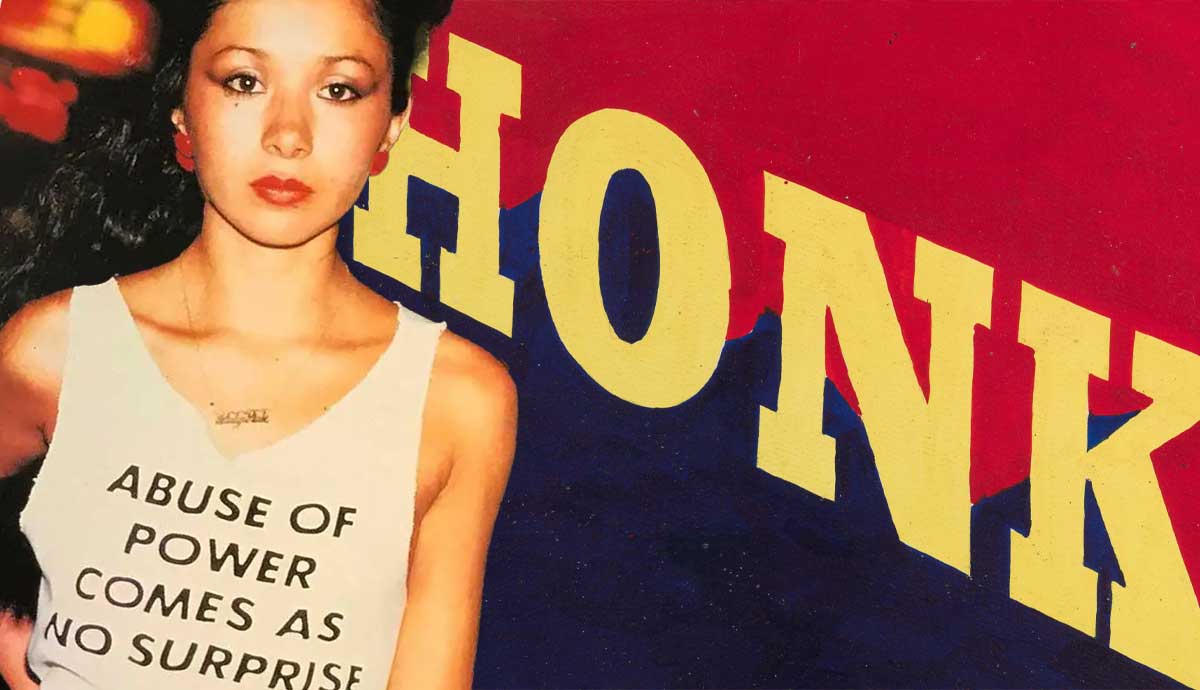
Words are powerful tools, which text-based artists know all too well. Text art has been around since the early 20th century, but it has experienced a surge in popularity since the 1960s, and is now one of the most prevalent strands of contemporary art. Text art explores the potent ability for words to be translated into works of art through a variety of means, ranging from neon signage to light art and hand-painted or drawn words. Artists who work with words have experimented with how short or long statements can provide a powerful commentary on a wide range of socio-political issues, from feminism to art world critiques. We look through a handful of the best examples of text art to demonstrate its full scope.
1. Tracey Emin, Hate and Power Can be a Terrible Thing, 2004

British artist Tracey Emin has been exploring the role of writing in her art since the 1990s. In her stitched quilts such as Hate and Power Can be a Terrible Thing, 2004, she introduces powerful and provocative statements with a confessional, diaristic quality that jar with the homely, domestic nature of quilting, including “I hate women like you” and “You have no idea of faith.” Emin often includes spelling mistakes in her stitched quilts to give them a deliberately crude, hand-made quality, emphasizing the intimate nature of her words.
2. Ed Ruscha, Daily Planet, 2003

American Pop artist Ed Ruscha has been making a series of artworks featuring sublime landscapes overlaid with seemingly unrelated passages of text since the 1980s, including this work. In his text art Ruscha deliberately creates a dissonance between words and images by juxtaposing them alongside one another. Here the phrase Daily Planet might be a reference to the newspaper where Clark Kent (aka Superman) worked, thus breaking apart the landscape image with a reference to popular culture, although Ruscha called the text here “mysterious and teasing.”
3. Jenny Holzer, Truisms, 1978-87

American artist Jenny Holzer produced a body of work titled Truisms between 1978 and 1987. The series comprised around 300 short statements or slogans aimed at causing shock or provocation, making readers think about the state of the world in a new way. Over the years she has infiltrated these statements into the public eye via a range of forms, including posters, stickers, printed-t-shirts, and later through LED signage and light art projections. She hoped these text art statements would be an antidote to the language of advertising and mass-media, cutting through their jargon to the truth beneath the surface.
4. Barbara Kruger, Untitled (Your Body Is a Battleground), 1989

American artist Barbara Kruger has been miming the typography and eye-catching slogans of advertising in her art for decades. She most often works with her trademark white text on red backgrounds, and striking black and white imagery. This particular artwork, featuring the phrase “Your Body is a Battleground”, was created for the Women’s March on Washington in 1989, in support of women’s reproductive freedom. While it was initially intended as a pro-choice slogan, this work of text art has now become recognized more generally as a potent commentary on gender inequalities faced by women in patriarchal society.
5. Martin Creed, Everything Is Going to Be Alright, 1999

British conceptual artist Martin Creed has often explored the role of language and text in his art, and how it can encourage us to look at situations in a new way. He has made several light-based, public artworks featuring the statement “Everything is going to be alright,” sometimes with all white lettering, and other times in brightly colored words. When attached to the outside of buildings, Creed’s text art statement conveys on the one hand a message of reassurance, but it also has an undercurrent of fear and instability, suggesting such reassurance is even needed in the first place.










